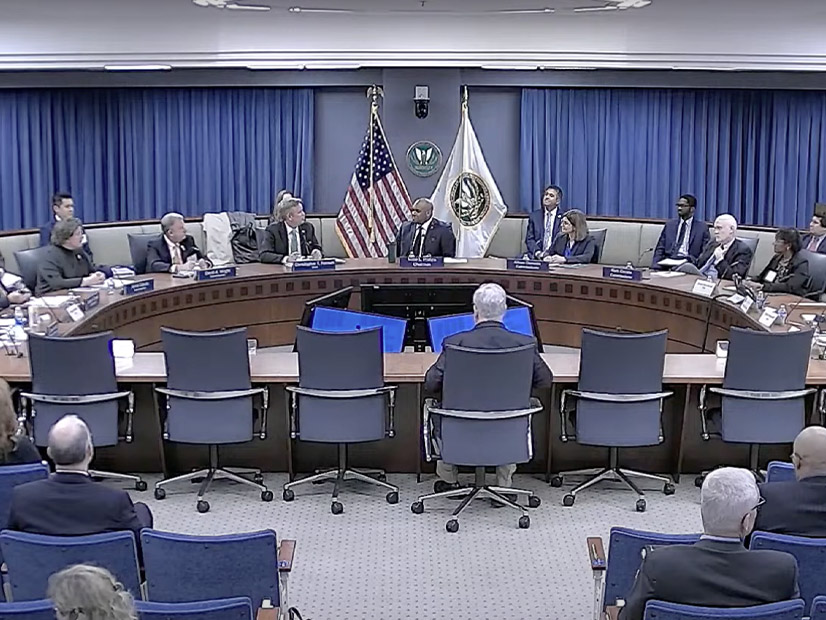FERC and the Nuclear Regulatory Commission convened a joint meeting Jan. 25 to examine issues of common interest, including the rollout of advanced reactors and grid reliability.
FERC Commissioner Mark Christie said nuclear power has two advantages.
“No. 1, it’s carbon free, and that’s great,” Christie said. “No. 2, it runs all the time. Not two weeks, but two months, three months, six months — it runs all the time. So that’s great. So basically, any future where you want to have … reliable power and reduce carbon emissions, it’s got to include nuclear.”
The future of the technology seems to be centered on small modular reactors, he added. The NRC is expecting 25 applications involving SMRs in the next five years, said Andrea Kock, deputy office director for engineering for the agency’s Office of Nuclear Reactor Regulation.
“Those are potential applicants that have come to us and stated that they intend to submit an application, and it spans technologies from things that look a lot like what we currently have, but smaller, to some really advanced designs,” Kock said.
The regulator has resolved more than 35 technical and policy issues and issued more than 60 guidance documents to support those reviews, Kock said. NRC is also using a graded approach that will focus on the most significant safety issues.
“The NRC is doing things differently to yield timely and cost-effective reviews without compromising on safety,” she added.
FERC Commissioner Allison Clements asked about the impact of the recent decision by NuScale Power and Utah Associated Municipal Power Systems to end the development of the SMR-based Carbon Free Power Project in Idaho. (See Pioneering NuScale Small Modular Reactor Canceled.)
Kock said the NRC is still reviewing that reactor design to allow it to be used by another project in the future if it winds up being approved.
SMRs and even smaller “microreactors,” which adapt the technology used to fuel submarines and aircraft carriers to civilian uses, present new issues the NRC has encountered before, Kock said. Such reactors will be built in a central factory and transported to where they are used, presenting novel regulatory issues, she added.
The smaller reactors also bring up questions about how much staff is needed to safely operate them, with many designed to be much more passive than traditional nuclear plants, Kock said.
Another issue is how to keep existing plants running as the country transitions to a greener grid, leading FERC Chair Willie Phillips to ask about California’s quest to keep the Diablo Canyon nuclear plant running and what factors policymakers should consider to keep existing plants online. (See Diablo Canyon Secures $1.1B DOE Award to Support Operations.)
One factor influencing the decision is how much energy a plant is producing, said David Ortiz, director of FERC’s Office of Electric Reliability.
“Nuclear plants are essentially energy resources because they’re on all the time,” Ortiz said.
“The next [factor] is the services that those provide,” he said, noting that the impact on voltage control is the transmission system support function that planners typically assess when a nuclear plant seeks to retire,
It will be important to study more than just voltage in the future because retirements can lead to other system issues, he added.
NRC is expecting to field a significant number of license renewal applications that would extend plant operations to 80 years, in part because of federal support for existing nuclear under the Inflation Reduction Act with the Civil Nuclear Credit Program, Kock said. (See DOE Opens IIJA Nuclear Credit Program to Recently Closed Plants.)
“We’ve received interest in the potential restart of the Palisades plant in Michigan, which is now looking to restart by August of 2025,” she said.


